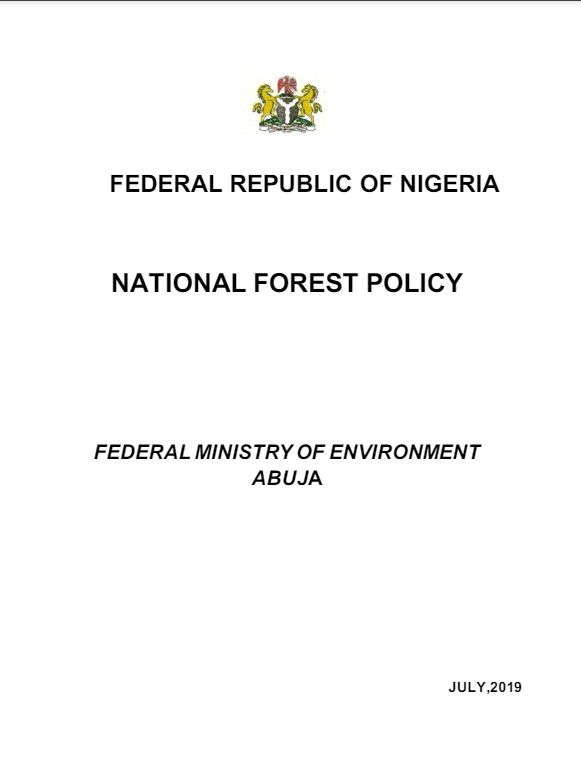National Forest policy – Formal forest administration started in Nigeria towards the end of the 19th century when the colonial British Administration began the forest reservation phase by setting aside land that contained valuable tree species in order to provide industrial timber and maintain the forest resources. In 1902 a Forestry Department was established in the Colony of Lagos and Southern Protectorate of Nigeria and later in the Northern Protectorate.
The ownership and management of forest lands in the country is also reinforced by the provisions of the Land Use Act Cap L5 LFN 2004 enacted in 1978 which gives the responsibility to manage and administer land within the territory of each state to the Governor of that State, except Federal Government owned land. Furthermore, the Endangered Species (Control of International Trade and Traffic) Amendment Act, 2016 provides for the conservation and management of Nigeria’s wildlife and the protection of some of her species in danger of extinction as a result of over-exploitation or habitat change, as required under the Convention on International Trade in Endangered Species of Wild Fauna and Flora (CITES), the Convention on Migratory Species of Wild Animals (CMS) and other relevant agreements and protocols and the Convention on Biological Diversity (CBD) to which Nigeria is a signatory.
These instruments enable the Federal Government to enforce the law and implement guidelines and policies on international trade in plant and animal species in Nigeria. Nigeria has also developed the National Biodiversity Strategy and Action Plan (2016 – 2020) as the national blueprint for the conservation and sustainable utilization of biodiversity, access to genetic resources and the fair and equitable sharing of the benefits arising from their utilization. It complements the National Forest Policy.

